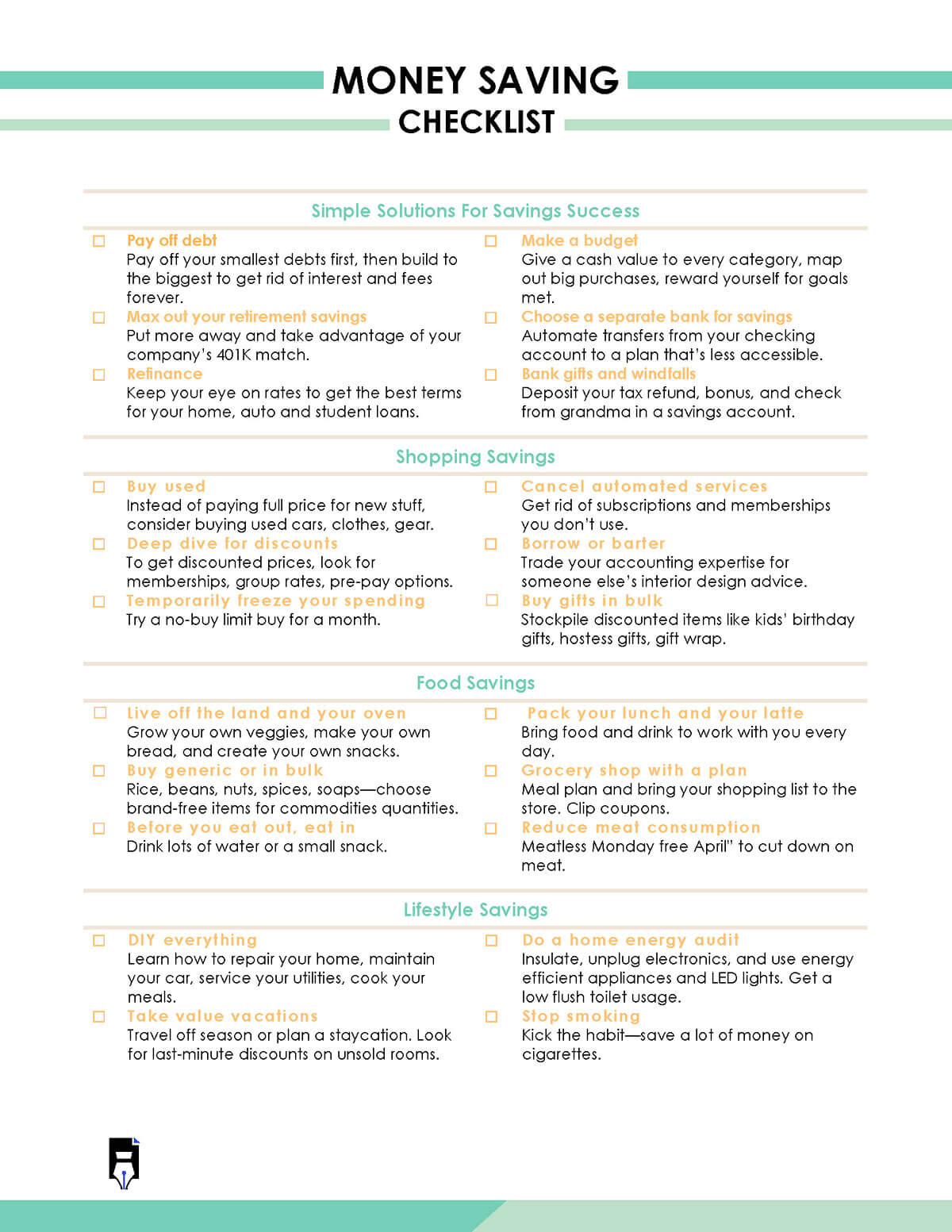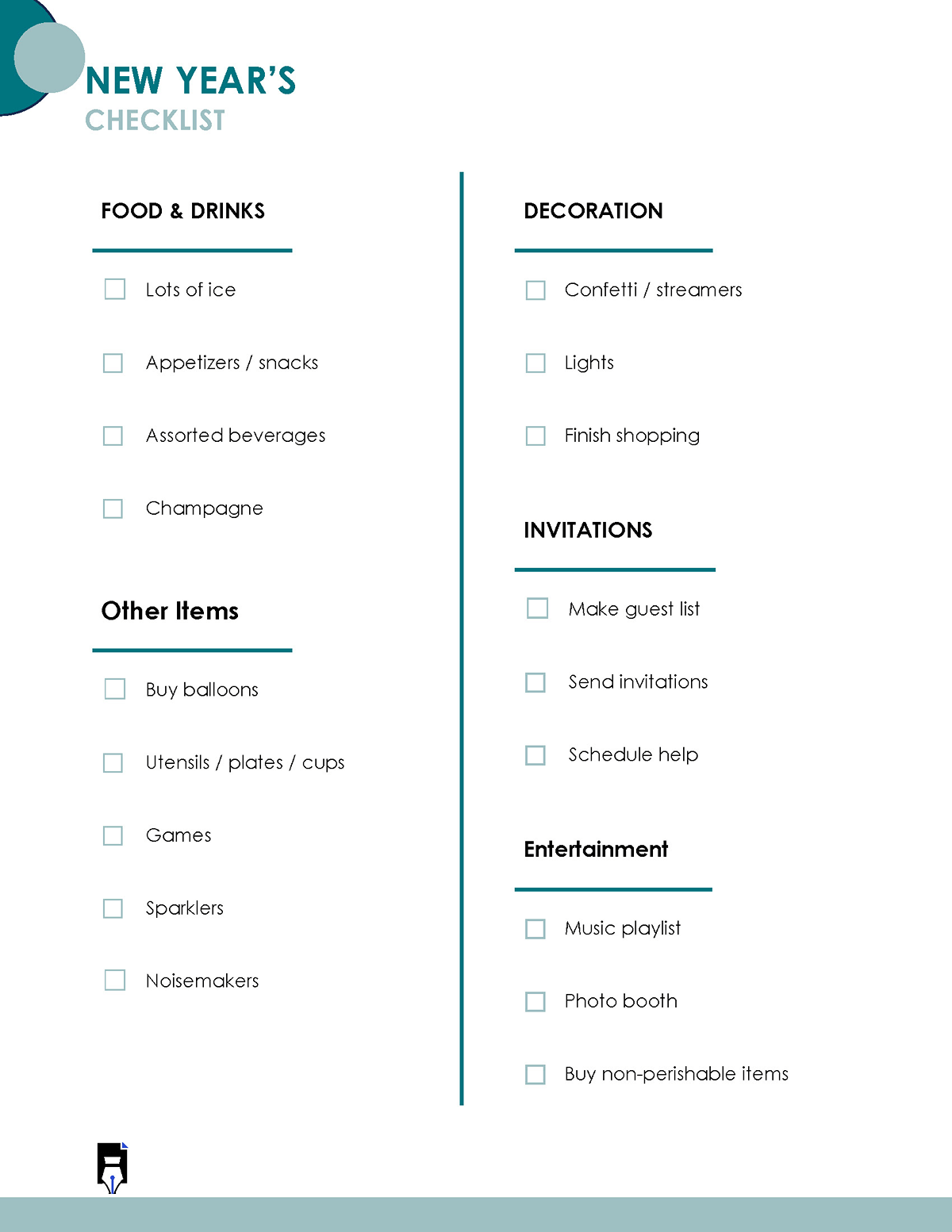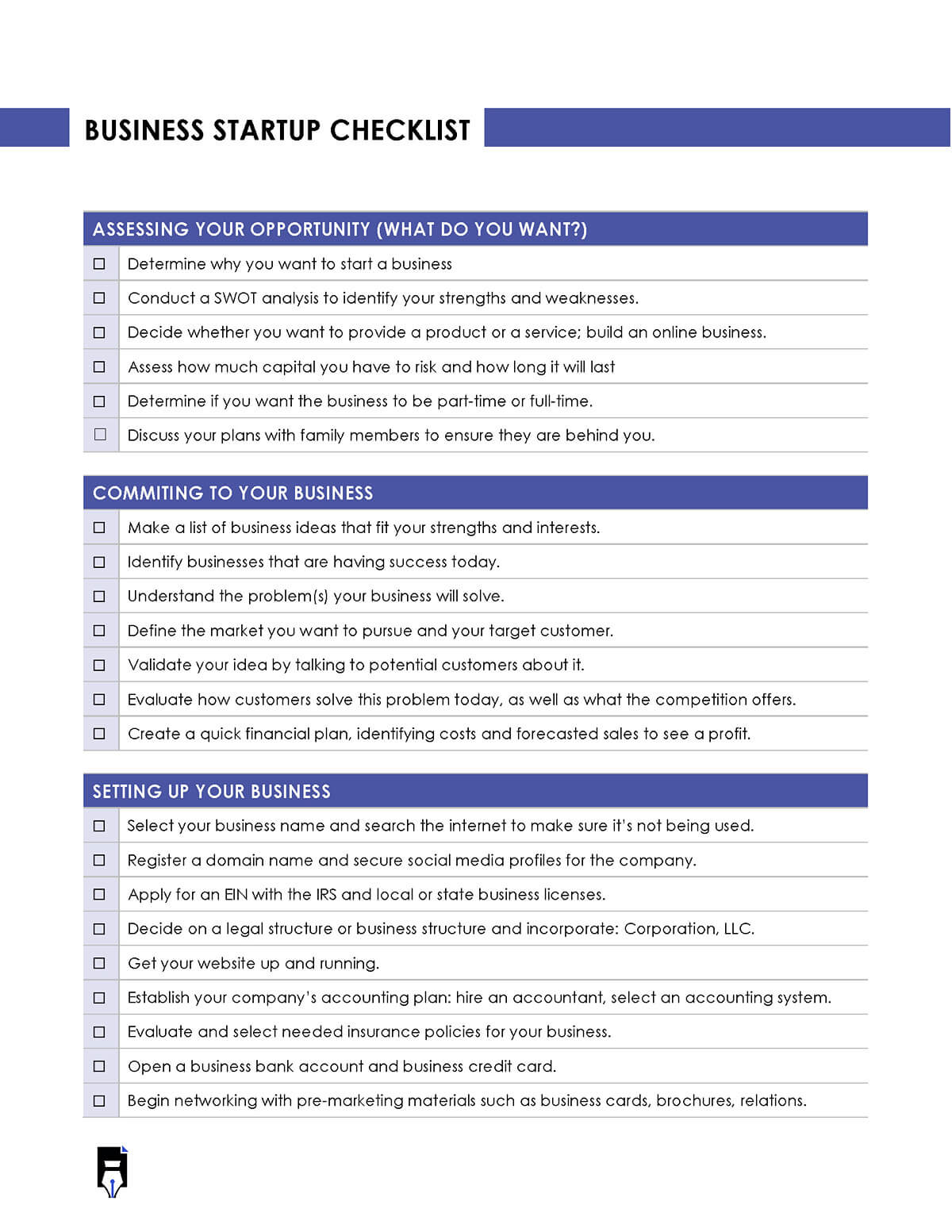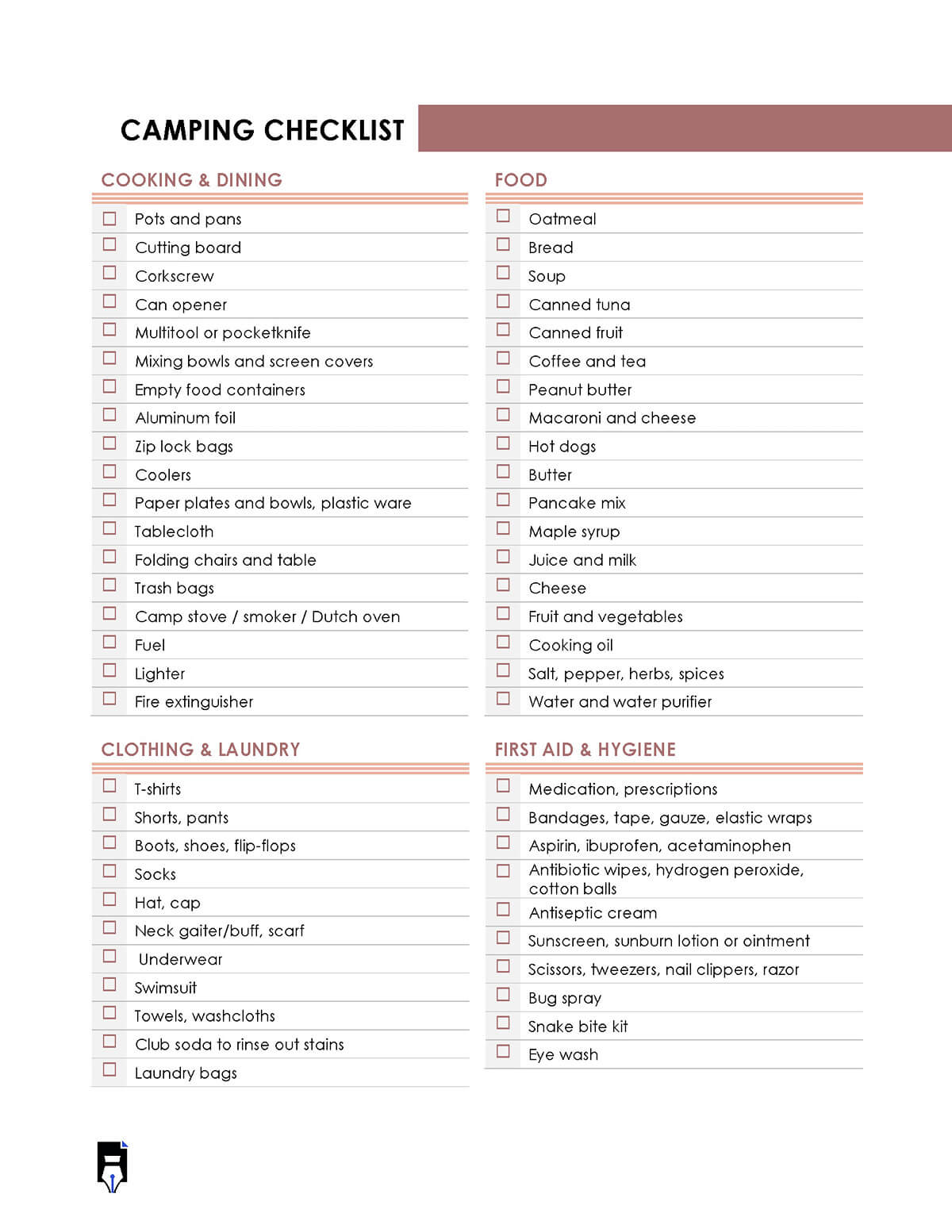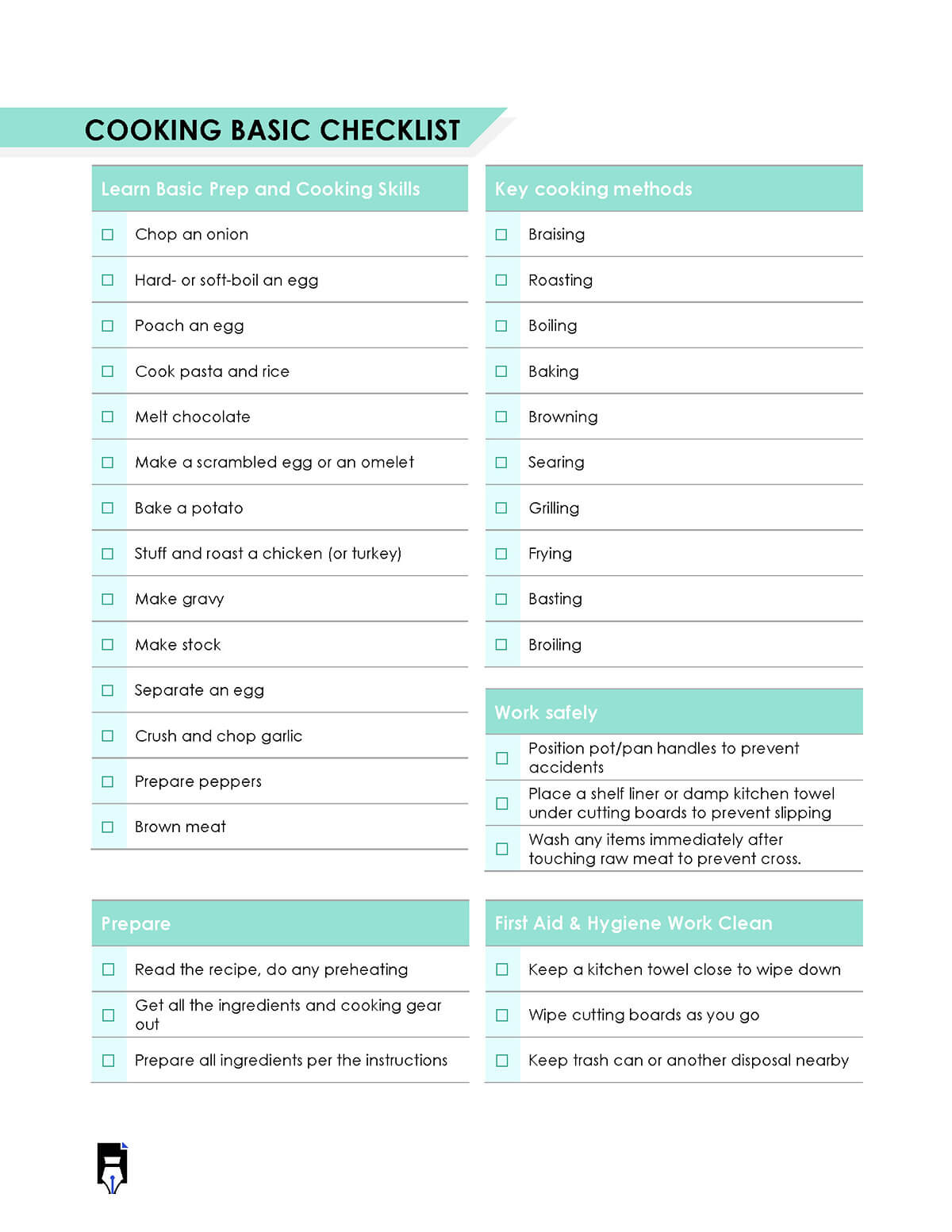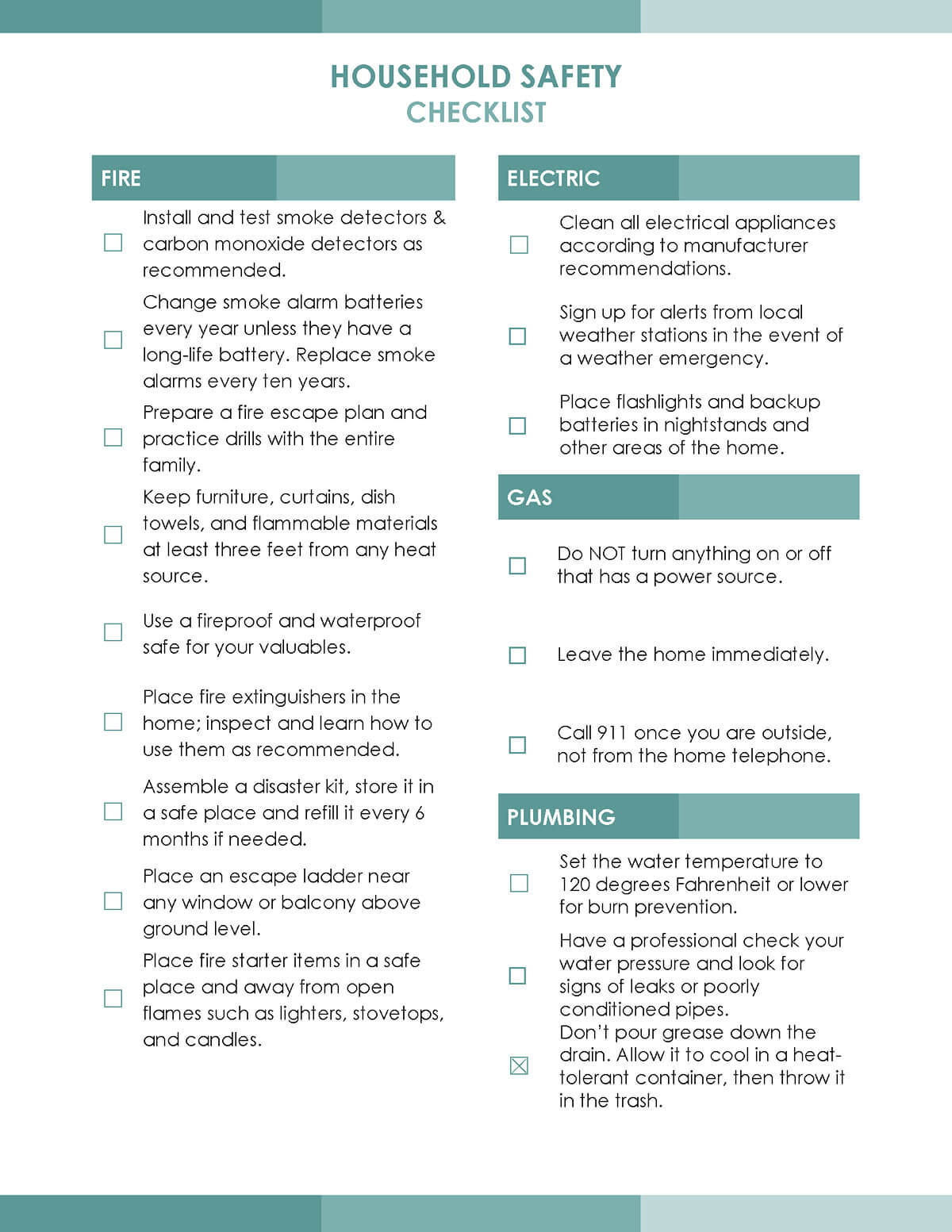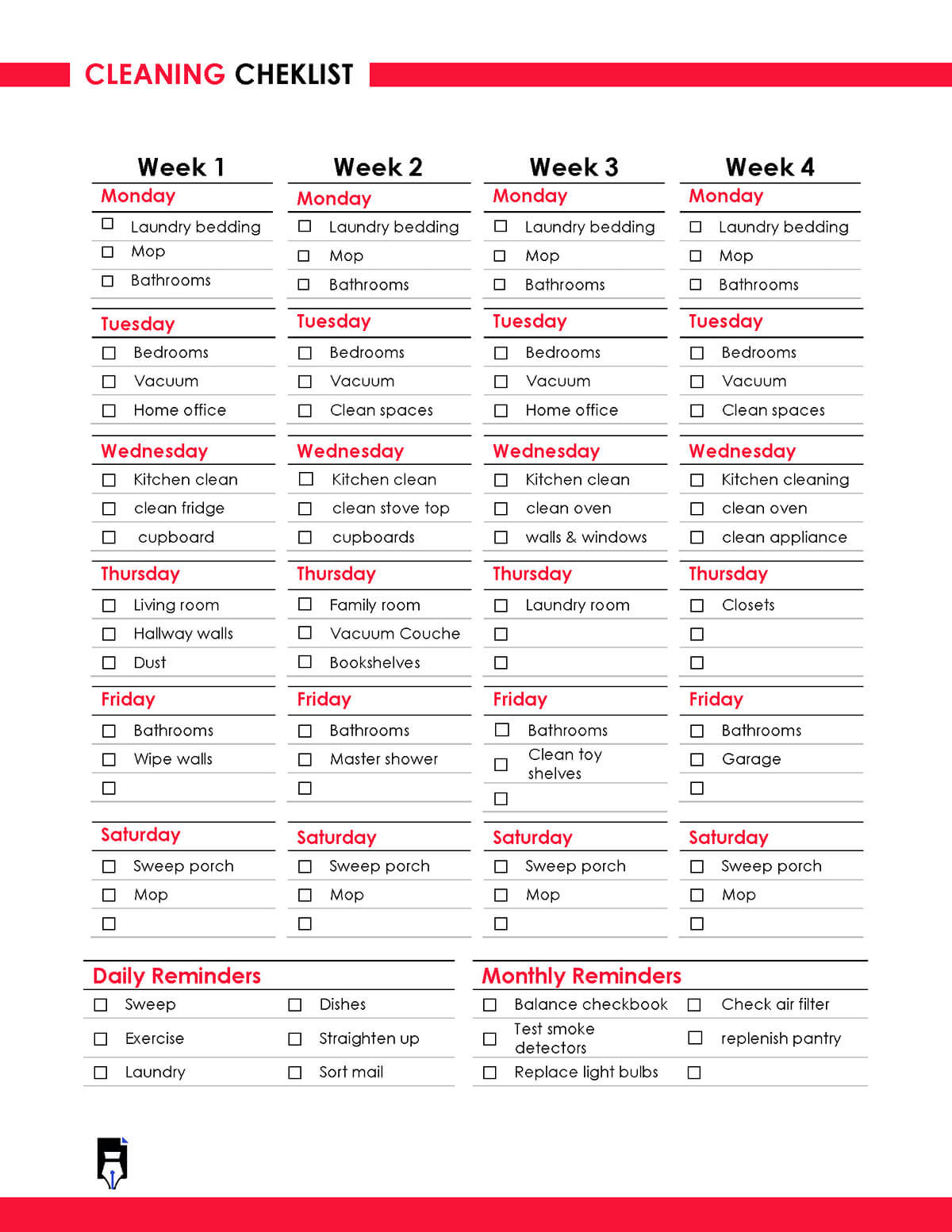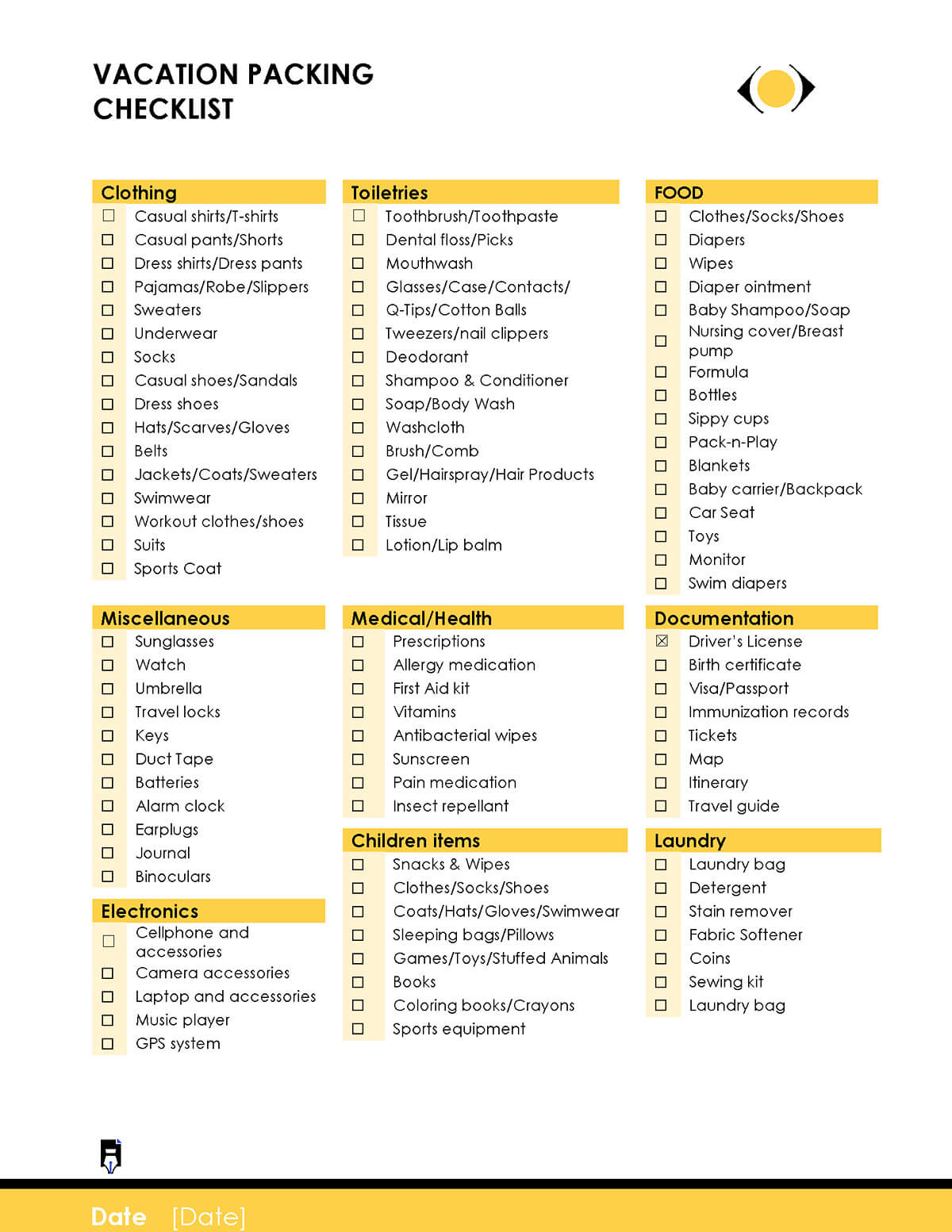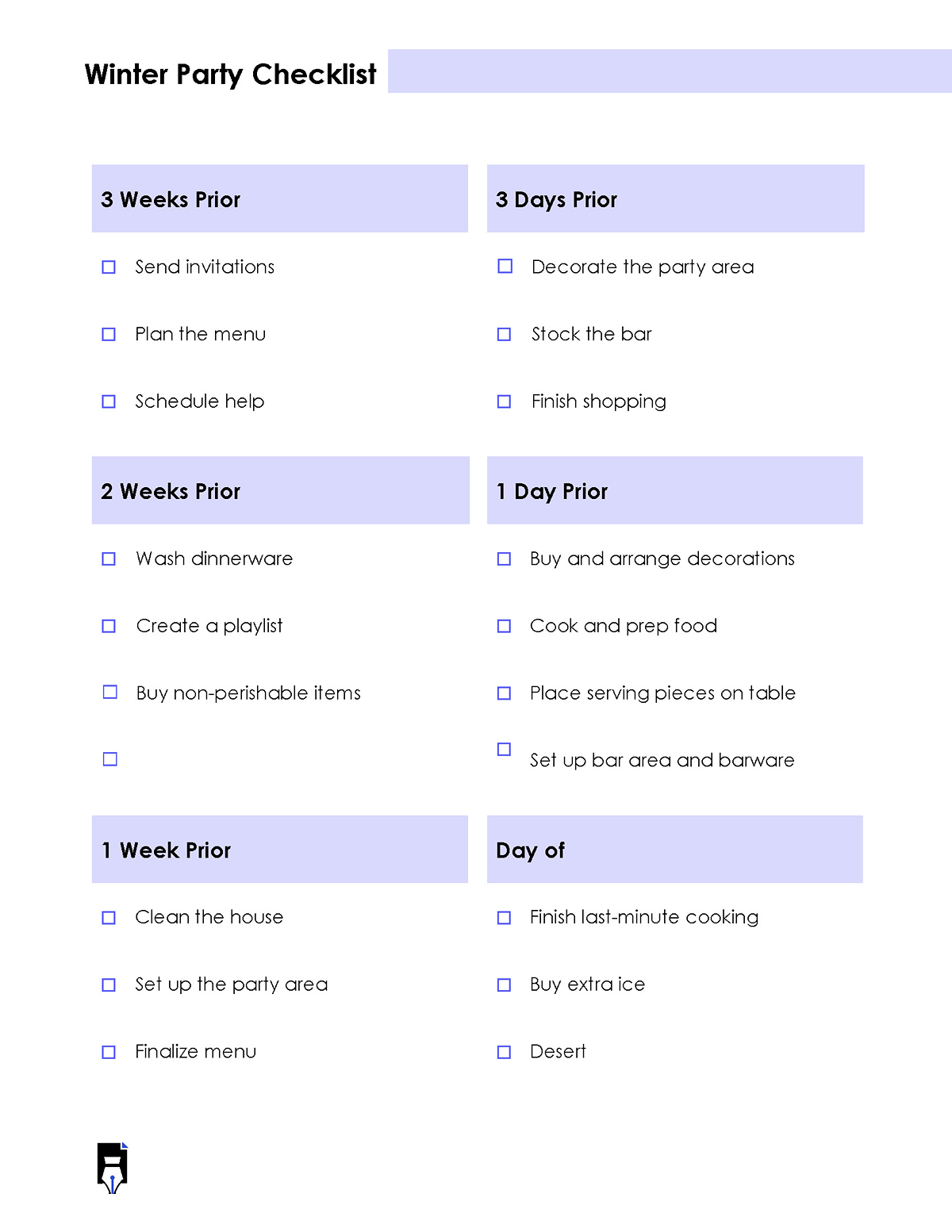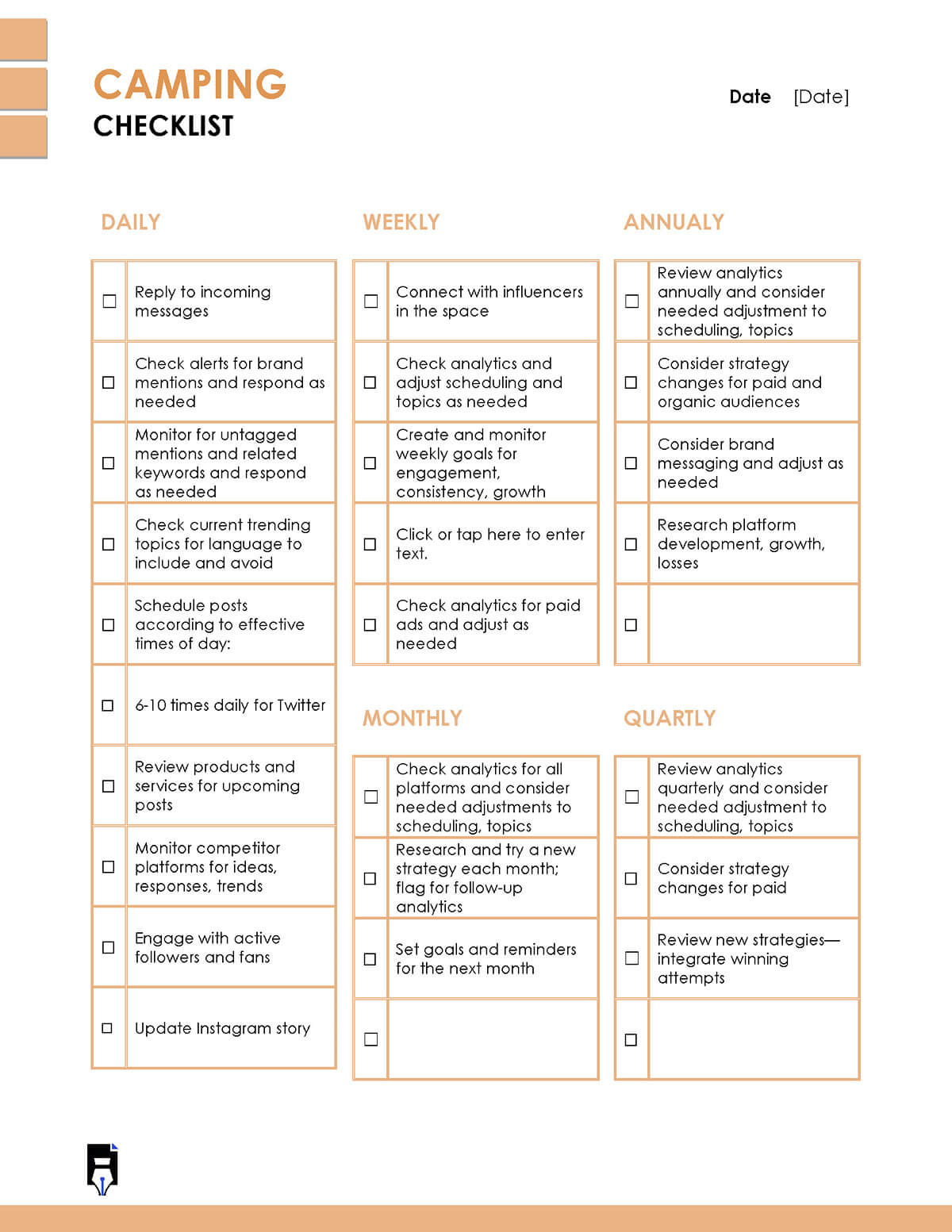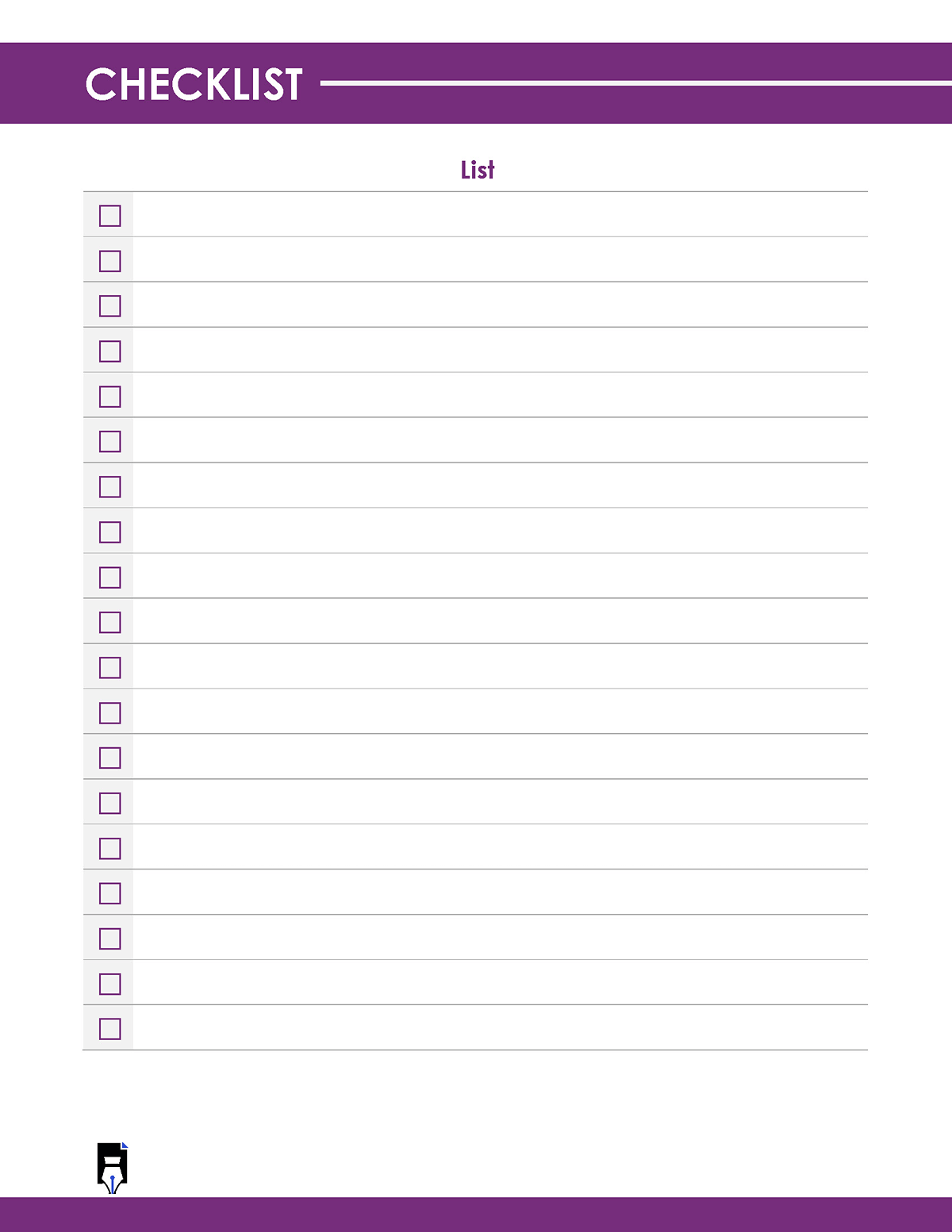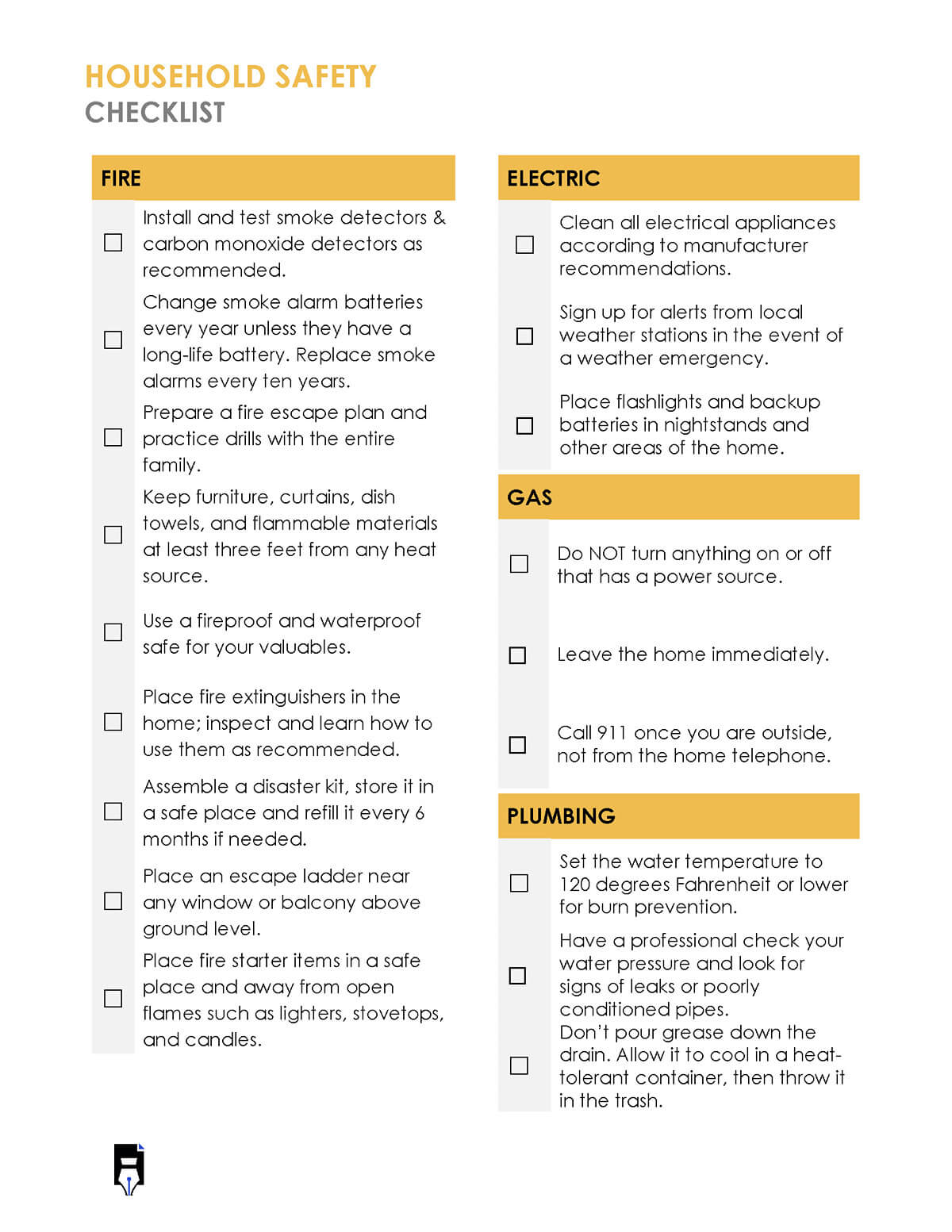When working on a project or process, there will often be a procedure or a series of steps that ought to be followed for the project or process to be successful. A checklist template is a tool that can be utilized to list down these steps or tasks. The checklist outlines the tasks or activities you need to complete in an orderly manner to track what has been completed and what is yet to be done. This way, you are assured not to miss crucial steps that could negatively affect the results or predetermined objective in any ongoing or new work/task you are undertaking.
Checklists are common when examining processes and procedures, inspecting operations, executing routine operations, and validating predetermined criteria of a process or system. Checklists can be used in businesses from construction to medical surgery procedures and your daily life to track recurring tasks. With a checklist in place, you can improve your consistency and productivity and reduce the probability of errors. This is because human errors and failures are reduced as the tasks and activities of the procedure or process are well documented.
A checklist offers a more direct and less detailed approach for regular monitoring of the status of activities and establishing a pattern in production and dispersion. The checklist must define the subject to be reviewed, the non-compliance condition, and the level of inspection or monitoring being undertaken. It should cover every part of the process or procedure that can provide significant data. The checklist can also be used to collect data on the evolution of an operation or function.
This article will carefully guide you on how to write a checklist template, its uses, and additional information you need to be aware of to understand how checklists work.
Checklist Templates
A checklist template is a pre-designed document that has all the elements of the checklist. You can download the checklist templates from below for free. These templates are easy to customize. This makes them reusable and more convenient to use when creating new checklists. These templates outline the fundamental components of a standard checklist. They are used to guide you on what information to input when creating a checklist. The activities of the process or procedure in question are systematically listed down in the order in which they are to be done.
Why, When, and Where Can a Checklist be Used?
Checklists are documents that provide a structured method to manage different tasks and activities. They let you stick to certain steps or procedures. As a result, checklist templates can be applied at different points when undertaking a procedure and for varying reasons.
Why You Should Use a Checklist
Using a checklist to organize, manage and monitor a process has many benefits. It is a way to optimize the execution of tasks and maintain consistency when undertaking recurring procedures or processes.
You can use a checklist for the following reasons:
Keeps things organized
By outlining all the steps in a process and structuring them in the right order of execution, a checklist can help you remain organized when undertaking any project. This way, you will not be confused about what step should come first, second and third in any process. In addition, the checklist lets you get a general overview of what you have to do so that you can plan accordingly.
Improves productivity
Since the checklist acts as a roadmap of the tasks and activities that have to be completed, you can optimize your task execution time. Also, since the right order of the tasks is given in the checklist, delays and downtimes are eliminated when undertaking procedures and processes. This cooperatively increases your productivity, and you can get more work done.
Keeps you motivated
The checklist is a source of motivation. As you cross off items on the checklist, you are motivated to get more work done. This is due to the satisfaction and pleasure that comes with completing a project successfully.
Increases creativity
Using a checklist puts your mind at ease by eliminating the pressure to remember procedures, thus reducing tension, emergency alarms, and errors that can be frustrating. This allows you to use your brain to explore and incorporate your creativity into your work. This can be very helpful in brainstorming ideas that will increase productivity.
Focuses on task delegation
A checklist outlines anything and everything that needs to be done on the list. This way, you know what needs to be done, the team member responsible for each step, and how long each step will take. As a result, you can be confident that the assignee will perform the procedure as per the process, and the assignee can be more confident in undertaking the work as all the steps are outlined.
Shows excellency
By describing the steps that need to be done in the exact order they have to be completed, you are less likely to miss something and thus fail when undertaking a procedure or process. This has promoted excellence in many industries where checklists are used.
For example, checklists have reduced surgical deaths in hospitals by 40% since errors are reduced. The use of checklists has also improved aviation and space exploration.
When to Use a Checklist
Checklists can be used for daily, weekly, monthly, or any other repetitive tasks when you do not want to miss any crucial step. As such, checklists are common when undertaking tasks that follow specific steps – that are all equally important – in a certain order. Examples of procedures and processes that use checklists include standard operating procedures (SOP), business process management, health and safety procedures, etc.
The checklist can be utilized at different stages of different processes and procedures. They can be used for data collection, inspection, analysis, and verification of operations and quality control, for example, to find the root cause of a defect.
Where to Use a Checklist
Checklists are used in multiple industries. Below are examples of industries where checklists are used along with their applications:
- Aviation – Pre-flight checklists are used to verify if it is safe to fly and ensure nothing is missing.
- Quality control in information development – Checklists are used to verify compliance with procedures, identify errors, and standardize applications.
- Civil lawsuits – A checklist is used to simplify the complex discovery and motion procedures.
- Sports cards – Checklists are placed inside packages to outline the collection of sports cards in the package.
Styles of a Checklist
A checklist can be used in different styles and formats. However, the checklist style should be appropriate for the process or procedure.
Here are examples of the different styles of checklists:
To-do checklist
A to-do checklist is meant to identify and enlist the tasks you want to complete within a specified period. This type of checklist can be used at home and work. The tasks are outlined based on the level of priority, which is dependent on the urgency and importance of each task.
Task or how-to checklist
Such a checklist template is meant to document instructions on how a specific process or procedure should be undertaken. It, therefore, outlines all the tasks or steps involved in successfully completing the procedure. Fundamentally, it is a guide that can be used to train people on how a process is done.
Do-confirm checklist
A do-confirm checklist records tasks that are done from memory but have to be confirmed by going through the checklist. So, for the process to be deemed successfully complete, you would have to review the checklist and confirm that no step/task was overlooked. Such checklists are common in aviation, where pilots must confirm that every pre-flight action has been done before take-off.
Troubleshooting checklist
Checklists are suitable for troubleshooting. However, this type of checklist outlines solutions to potential issues in a system or procedure. The solutions will typically be outlined in several steps.
Discipline checklist
This is a time-bound checklist where the outlined tasks are to be completed within a specified period. This checklist is used to cultivate discipline at work or home.
Coordination checklist
A coordination checklist outlines tasks to be undertaken by more than one party, for example, a project team. It is meant to facilitate coordination between the different members or teams. It outlines the activities to be carried out and assigns the tasks to the appropriate members or teams.
Stage verification checklist
Such a checklist breaks down a procedure into several short and manageable stages. Each stage will typically have a deadline. At each stage, the quality of the result can be assessed to ensure no mistakes have been made.
Checklist Vs. To-Do List
A checklist and a to-do list can be used interchangeably. However, there are some fundamental differences between the two. A checklist ensures that every step of a process or procedure is completed. The sequence and order of the steps must be adhered to if the process or procedure is to be successful. A checklist is basically a “how-to-do” record.
A to-do list is a simple task log that identifies things you need to do at home or work and your priorities for each task you have identified. Fundamentally, a to-do list is a “what-to-do” document.
Checklists are applied for repetitive tasks to avoid missing any important steps, whereas to-do lists are used to reduce the number of tasks on your daily, weekly, monthly, or any other schedule. They are also more detailed than to-do lists.
Information to Include in a Checklist
The information included on a checklist is dependent on the process or procedure you are undertaking. As a result, their formats vary from simple checklists to highly detailed, professional checklists; however, certain common features are present in all those styles of checklists.
Here are examples of information included on different types of checklists:
Checklist name
This portion of the checklist identifies and describes the name, purpose, and objectives of the checklist. This can be the name of the project.
Date
The checklist should include the date on which the procedure was performed. This is a way of keeping track of and verifying when each procedure was performed.
Add tasks and details
This is where all steps required to complete an activity are outlined in detail. The tasks are listed and described in detail.
Task urgency
This is where the degree of priority (level of urgency) attached to each task is determined and documented in the checklist. If the tasks are classified as urgent, it implies that these tasks should be completed immediately. On the other hand, if they are deemed unimportant or not urgent, it means that the deadline for completing these tasks is not very tight and will not be regarded as a major priority and will thus rank lower in the order.
Task completion
The template should record the status of each task. This lists the tasks that have been completed, which are ongoing, which are not completed, and why certain steps/tasks were not completed.
Due date
This is where the due date for each task is recorded. This is a way to ensure that any applicable deadlines are met.
How to Create a Checklist in MS Word and Excel
Several free software programs can be used to create a checklist template. The most common programs are MS Word and MS Excel. The format of the checklist should be carefully followed as it affects how effective a checklist will be.
MS Word
MS Word is a popular wording application that is readily available to most people. This makes it a convenient tool to use when creating checklists.
Here are a few steps you must follow when creating a checklist in MS Word:
Open a new document
Start a new blank document with MS Word. Launch MS word, go to “File,” select “New,” and create a “Blank Document.”

Title the checklist
Next, enter the checklist’s name/title. You can name the checklist based on the project, process, or procedure.

Write your tasks
Fill in the checklist with tasks and activities of your choice. These tasks and activities will vary depending on the type of checklist you want to create and the information you want to include on each list item.

Add a checklist button in front of all tasks
Lastly, add the checklist button to the list of tasks. Go to “File,” select “Options,” and select “Customize Ribbon.” Under “Main Tabs,” select “Developer,” and the checklist feature will be added to your toolbar. Add a checkbox to each task.


MS Excel
Another way to create checklists is through MS Excel. Excel creates checklists using spreadsheets. Here are the steps to creating a worksheet in Excel:
Open your spreadsheet
Launch MS Excel, select “File,” and select “New” to create a blank sheet.

To activate checkboxes in Excel, go to “File,” click on “Options,” click “Customize Ribbon,” and select “Developer” under Main Tabs.” The developer command will appear in the main toolbar.

Add your tasks
Next, add your tasks to the worksheet. Start by labeling columns. The first column should be labeled as “Tasks,” and label the second column as “Status.”

Insert the checkboxes
Add checkboxes after each checklist item in Excel under the “Status” column. Move the cursor to the first row of the second column. Go to “Developer,” select “Insert,” and on the drop-down menu, select the checkbox. Position it accordingly. Copy the checkbox and paste it on every task line.

Add status
Now, enter the progress of each task in this column. Once a task is completed, tick its checkbox on the checklist. Then, right-click on the first check box, go to “Format Control,” select checked, and link with Cell two by writing “C2.” Once selected, the checklist will display “TRUE” in cell two. Repeat the procedure for other tasks.



Effective Tips
Try to use a simple and clear template to create your checklist. A simple and easy-to-read checklist is easier to implement. Here are other ways to make your checklist more efficient and functional:
Write your goals and objectives
Add goals and objectives to the checklist. Goals are the outcomes you wish to achieve, while objectives are intermediary results that have to be accomplished for the goals to be realized.
Keep the purpose of the checklist in mind
Always remember the primary purpose for creating the checklist. For example, when creating a checklist for business purposes, make sure that a signed contract is in place. The contract guarantees that the client will fulfill their obligations once you complete your assigned tasks.
Make a list of all the tasks
Brainstorm all the tasks and activities included in the process or procedure. Remember, the aim of creating a checklist is to ensure no steps are missed. You can review the checklist after creating the final draft and verify that all steps have been documented.
The tasks should be simple and descriptive
The checklist should be simple and easy to understand and follow. The tasks should be arranged in a rational order so that each user can know how the steps follow each other.
Organize the tasks into categories
Tasks in a checklist can be categorized into different groups of closely related tasks. You should label each category/group with appropriate names. This ensures that the checklist is easy to navigate and you can easily identify its elements.
The checklist should be actionable
Break down big tasks into smaller tasks that are easier to complete. This is so as to create a functional and feasible checklist. If the tasks are too ambiguous, implementing the checklist would not be easy.
Keep modifying the checklist
The checklist can be modified anytime to include new tasks, rearrange the existing tasks or remove unnecessary items. It should be an evolving document that can adapt to changes that improve the results of the process. So, revise the checklist until it is maximally useful.
Frequently Asked Questions
What is a good checklist?
A good checklist should serve as a reminder of the most crucial tasks of a process or procedure. Also, it should help you track the progress of your projects. Such a checklist is simple, precise, and efficient to use even during difficult situations. A checklist also helps to achieve more effective results in good time, thus boosting productivity at work or home.
How effective are checklists?
Effective checklists are those that have been created based on a thorough analysis of the task. They help you identify the steps that need to be followed to complete important tasks systematically and efficiently. So, checklists will help you organize tasks and lower errors in the execution of processes, thus boosting productivity and helping delegate tasks. Checklists are also sources of motivation and promote creativity when undertaking tasks.
What is the format of checklist writing?
To write an effective checklist, start with a goal that determines the steps to be listed in the document. Brainstorm and write down all the steps required to achieve the predetermined goal. Arrange the steps in order of priority. Break down the steps into actionable tasks and add checkboxes to each task. Review the checklist and verify that each step required to successfully complete the process or procedure has been written.
What is the importance of checklists in the workplace?
Checklists are useful in business and industrial circles as they ensure that nothing is forgotten when completing tasks. A checklist is primarily used as a tool for recording and monitoring business processes and procedures. The checklist ensures that everything is done correctly, in the correct order, at the appropriate time, and by the right people.
